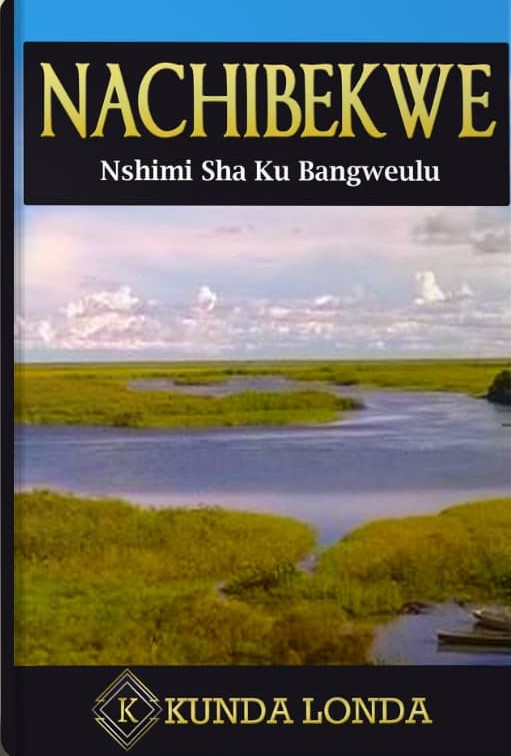FISHING METHOD NUMBER FOUR- THE SEINE OR DRAGNET -MUKWAU
This post is a continuation of where we ended in 2019, giving
you highlights of life in the Bangweulu Swamps, and Lunga in particular. We
started talking about fishing, the mainstay of the people in the area and we
resume to continue discussing some of the methods employed to earn a living.
Let’s talk about the seine net.
A seine net is of historical importance in the business of commercial
fishing. It is said to be the fishing method employed by the fishermen that
later turned fishers of men during the time of Jesus Christ. It is one of the
mass-catch methods of old that is also used in the Bangweulu Swamps today.
“Seines hold a special honor in the
Bible. Of all the nets mentioned in the Bible, the seine is mentioned more than
any other, a total of nine times. In the Old Testament, written in Hebrew, the
word for seine was "Herem" while in the New Testament, written in Greek,
the word was "Sagene" from which we probably get the English word
seine.”
A seine net is an amalgamation of different mesh-size nets;
could be 2- 3 inches in the wings and 1-1.5 inch in the middle, which are
connected together to form one long net of about 50 meters. Its width will
depend on the depth of water in fishing sites but will normally be around 2
meters in the sides while 6 meters in the center.
The cotton used in the
construction of the net would range from 6 to 9 ply nylon. It is made such strong
to withstand the constant pulling.
As stated, the net is
deliberately constructed wider in the middle and narrower as it gets to both
ends. This is so because as the fish realizes it is trapped, it will swim along
further but will find no escape because of the length and well balanced and vertically suspended net.
Normally, it will be fitted with two short wooden meter-long
studs at each end called Mutepa, from whose axis drag ropes of between 20-30
meters long are attached. Heavy but sparsely spaced baked clay sinkers are
fitted at the bottom while big corks are attached to the top. The middle, Ndumba, is fitted with a more significant buoy to a short rope to always show the anvil-shaped
center of the net during the haul; and when necessary, this part of the net is
held by someone to deter fish from jumping out of the dragnet.
The net would be cast over a wide area where schools of fish
are suspected or are known to be found with one party in the team holding the
end of one rope from the bank. The team setting the net will also carry along
the other rope from the other end and they will eventually pull it alongside
other team members. Hauling the net would depend on the situation obtaining. At
times, fishermen can set the net and wait for a considerable number of minutes
to make sure enough fish is trapped before pulling. Otherwise, hauling is done
immediately after setting.
If the site is used often, a special area, mfubo, is cleared where
the net would be pulled from, which is almost always at the bank. If not, the net can be pulled from a
well-secured dug-out canoe in shallow water. The two wings of the dragnet are
then pulled simultaneously from both ends towards mfubo, first using the drag ropes,
and later as the net gets closer, from both the bottom and the top of the net.
The activity is repeated as many times that time and sites would allow or depending
on the quantity of catch desired.
The minimum number of
people required on any one particular fishing expedition would be four, though
the ideal number is about six in a team. This is to allow for the pulling from the bottom, kutapa, and/or dragging from the top. As indicated, one or two may be following behind the net
to ensure few or no fish escapes.
Seine netting can either be done during the day or in the
night (during moonlight) depending on targeted fish species. The catch is
always a mixture of kinds of fish but mostly would be the cichlid species,
especially in deeper waters during day time. You can also use a seine net to catch fish such as mintesa
This method is very
popular where a company desires to have an increased catch quicker. It can also
be noted that most fishermen who own seine nets in Bangweulu are considered well
to do within the fishing community.
As you can see, the same old biblical method of using a seine net applies to
the Unga people of Bangweulu Swamps today.
"Again, the kingdom of heaven
is like a seine net which was thrown into the sea and gathered fish of every
kind; when it was full, men drew it ashore and sat down, and sorted the good
into vessels but threw away the bad." Matthew 13:47-48
You can leave your comments below
and subscribe to receive these posts directly
in your e-mail box.
END
 SoundCloud
SoundCloud



Comments